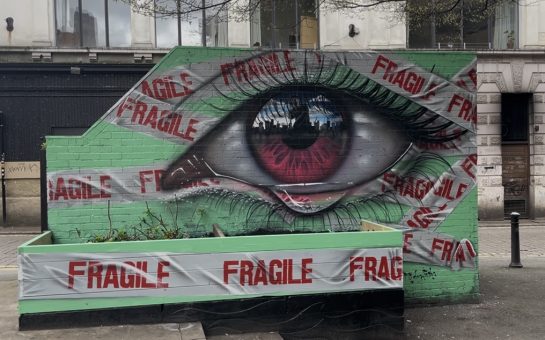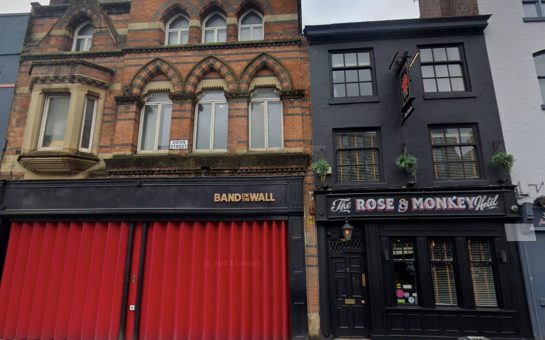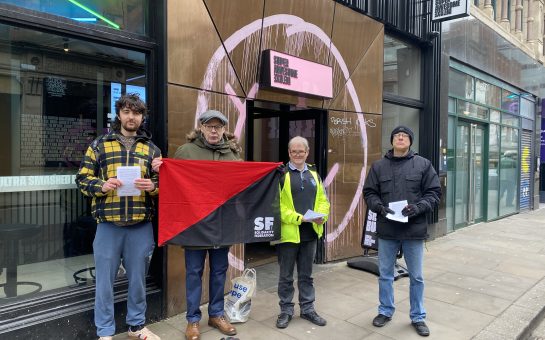Jerome Caminada, the Manchester-born detective who apparently inspired Sherlock Holmes, is set to have a city centre pub named after him.
Planning permission has been submitted for a 15-bedroom hotel and pub on the corner of Shudehill and Thomas Street which will bear the name of Manchester’s most famous detective. So who exactly is he, and why is he not more well-known?
Caminada served in the city’s police force between 1868 and 1899 and his legendary antics are believed to have been one of the inspirations behind Arthur Conan Doyle’s hero.
A book on Caminada called ‘The Real Sherlock Holmes: The Hidden Story of Jerome Caminada’, by Manchester-born author Angela Buckley, was released three years ago to commemorate the centenary of his death.
The book reveals a number of striking similarities shared by the pair, including a penchant for travelling by taxi cab and unconventional methods of solving crime. It is even said that Caminada had his very own versions of Professor Moriarty and Irene Adler.
1,225 CRIMINALS
Caminada was born on March 15, 1844, to an Italian father and Irish mother and grew up in the slums just off Deansgate. The Caminada family home was situated on Peter Street, opposite what would later become the Free Trade Hall, in an area widely regarded as one of the most dangerous places in Britain at the time.
Caminada grew up in severe poverty, and his early life was beset by tragedy as he experienced the loss of his father and several siblings to disease.
After spending his formative years surrounded by brothels, and dens full of nefarious crooks, he decided to eschew a life of crime and instead dedicate his life towards preventing it, joining the city’s police force in 1868, aged 23.
“It was quite unusual for somebody like Caminada to join the police because he was from an immigrant family,” Buckley told MM.
“Because he grew up in Deansgate when all the rookeries were there, he knew all the criminals and what they were up to. That was probably his biggest weapon against crime. He then developed his own set of skills from there.”
The Real Sherlock Holmes is now available on Kindle at the reduced price of £5.69 https://t.co/W1l3EObSPN pic.twitter.com/ij6d4ere61
— Angela Buckley (@amebuckley) April 14, 2017
Caminada was quickly promoted to the detective department, which operated from Manchester Town Hall, and embarked on a career which would see him become responsible for the imprisonment of a reported 1,225 criminals.
Like Sherlock, Detective Caminada was noted for the eccentric techniques he would employ to bring criminals to justice. It was said that he would stand outside prison yards and study the gait of habitual offenders and it was this tactic which led to him catching his nemesis Bob Horridge, sometimes referred to as Caminada’s Moriarty.
Horridge, one of Victorian Manchester’s most notorious villains was on the run after shooting two police officers during a break-in on Rochdale Road. During a final confrontation on the docks in Liverpool, in which Caminada was yet again in disguise, the pair finally came face-to-face.
Accompanied by a number of other officers who arrived on the scene, Caminada managed to detain Horridge and take him back to Manchester, where he was jailed for life.
Caminada’s femme fatale was Alicia Ormonde, a well-educated, talented and alluring criminal, apparently from an aristocratic background, not dissimilar to Holmes’s Adler. Ormonde was wanted across the country for a string of frauds, and Caminada managed to track her down and arrest her but become captivated by her beauty and charm. A year later, in 1890, Conan Doyle released A Scandal in Bohemia.
Despite his infatuation with Ormonde, Caminada was a happily married man, wedding Amelia Wainhouse in late 1881 at the Church of the Holy Name on Oxford Road, Manchester.
Following their wedding, the couple moved to Eastnor Street in Old Trafford, then one of Manchester’s most salubrious districts, where their five children were born. Sadly, in a time of high infant mortality, three died, with their youngest children, Charles and Mary, the only ones who survived.
MASTER OF DISGUISE
During his career, Caminada became renowned for prowling Manchester’s roughest neighbourhoods alone by night, intervening in any crimes he encountered. He also had a vast web of informers, whom he would meet regularly behind St Mary’s Church, known as the Hidden Gem, in the city centre.
Caminada would take his informers to local watering holes to buy them a pint of ale in exchange for information and even owned a pub of his own. Although a devout Catholic, it is in some ways fitting that he could end up having a pub named after him.
Caminada’s most successful method of catching criminals was through disguise, a trick he apparently deployed numerous times to astounding success. It was said that the maverick detective was such a master of the art that on one occasion, while dressed as a labourer, tracking a group of thieves at the Grand National, even his own chief constable failed to recognise him.
However, perhaps his finest moment was the Manchester Cab Mystery of 1889. On a cold Tuesday evening in February, well-known paper merchant John Fletcher hailed down a horse-drawn cab on the steps of Manchester Cathedral in the company of a young man.
An hour and a half later, Fletcher was found dead, while the other man was nowhere to be seen.
While the authorities thought Fletcher had overdosed, Caminada’s senses told him that the man had been murdered. He managed to track down the killer, 18-year-old Charles Parton, who was subsequently convicted within three weeks.
With the knowledge that Parton’s father used the chemical chloral hydrate for illegal prize fighting, and that a bottle of it had been reported stolen from a shop in Parton’s home city of Liverpool a few days earlier, Caminada deduced that the man had poisoned Fletcher in an attempt to rob him.
Caminada was hailed a hero and his success was reported by the national press, catapulting him to fame across Britain.
In 1899, the most successful detective of the Victorian era retired, later becoming a private detective, an estate agent, as well as a Manchester city councillor. He died at his family home in Moss Side in 1914, with the cause of death recorded as diabetes, influenza and heart disease.
His grave can be found in Southern Cemetery in Chorlton, while several mementos and artefacts from throughout his illustrious career can be found on display at the Greater Manchester Police Museum on Newton Street.
While Conan Doyle has claimed that the main inspiration behind Sherlock was Dr Joseph Bell, a surgeon at Edinburgh Royal Infirmary, for whom the author once worked as a clerk, Buckley believes that it is inevitable that elements of Caminada’s casework and experiences would have been used when creating Holmes.
“The key thing for me is the timing. When Caminada solved the Manchester Cab Mystery it was only two years after the first Sherlock Holmes story,” she said.
“Caminada was very much at the height of his career during the 1880s and his antics were reported in the national press at the time, so Conan Doyle would definitely have known of him.
“He was certainly the most successful police officer back then.”
New post: The Art of Tracing Footsteps #Vicrtoriandetectives #Sherlock #footprinting https://t.co/iKnConJV7y pic.twitter.com/4CWetdBCAo
— Angela Buckley (@amebuckley) July 14, 2017



